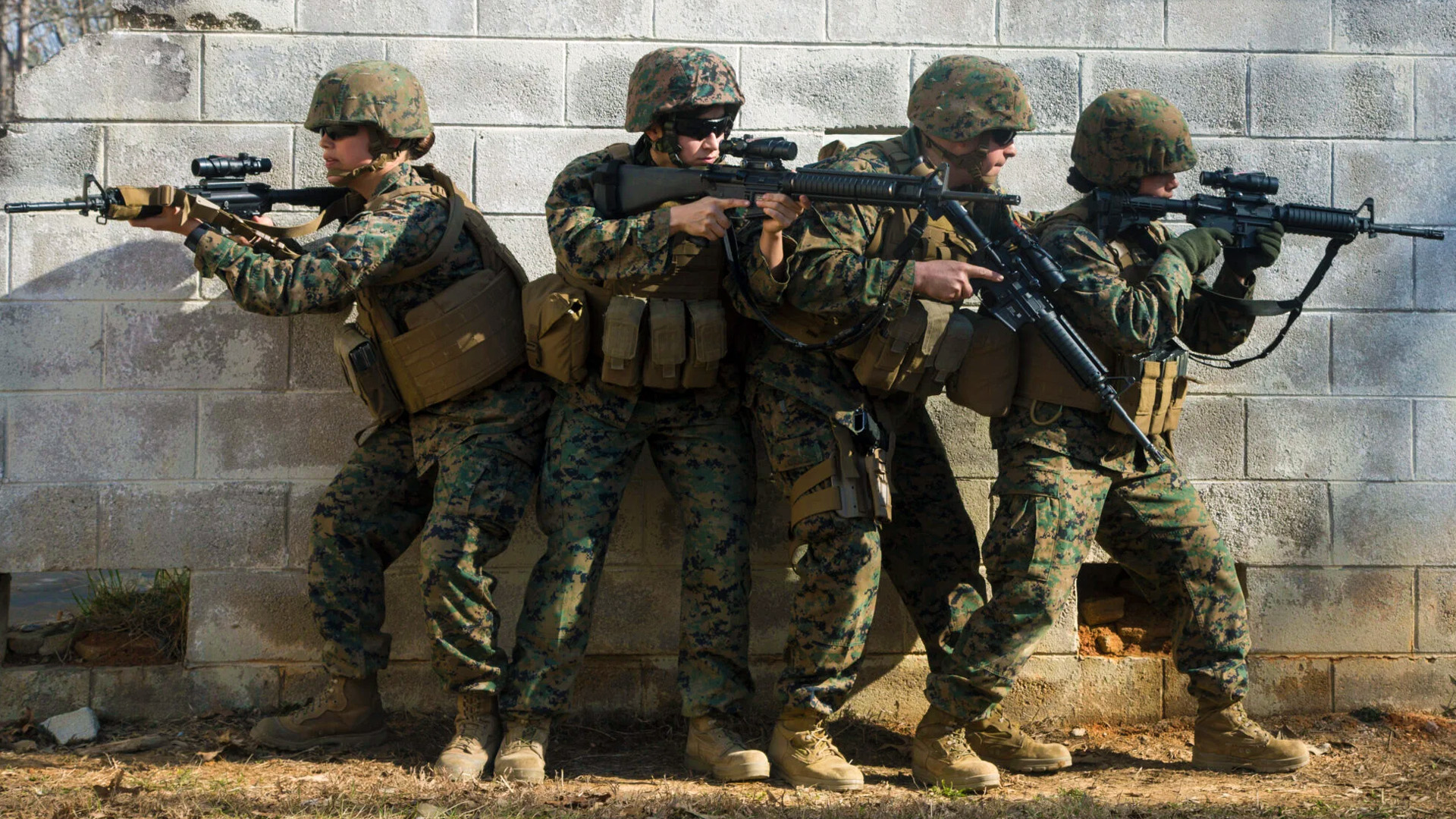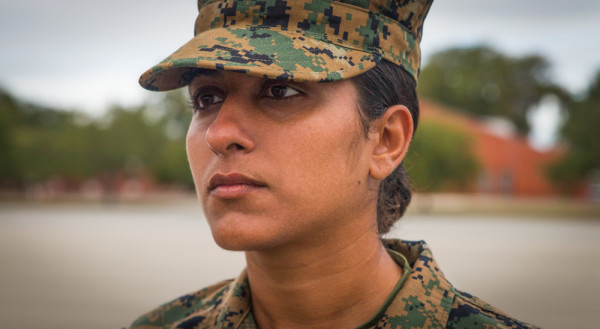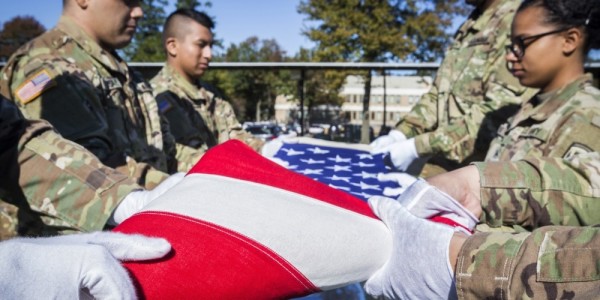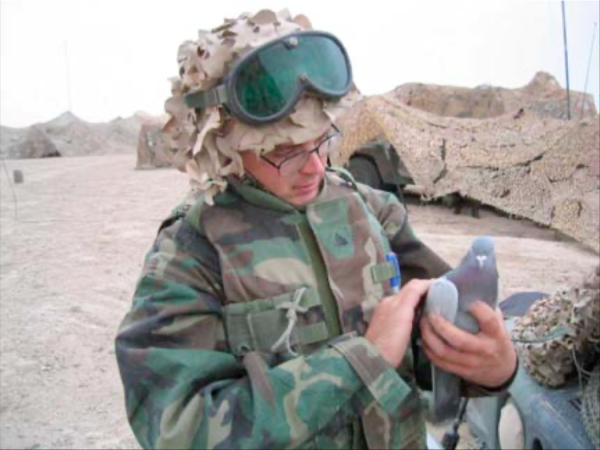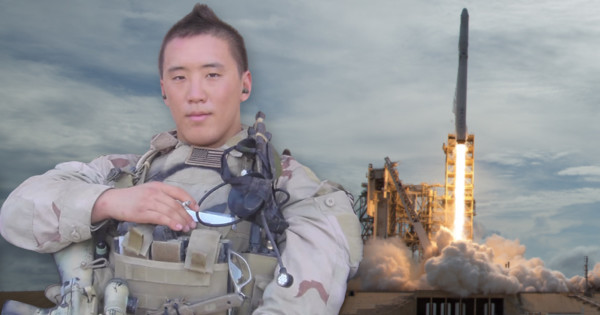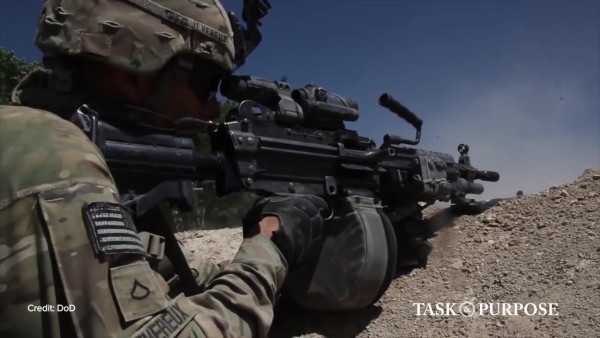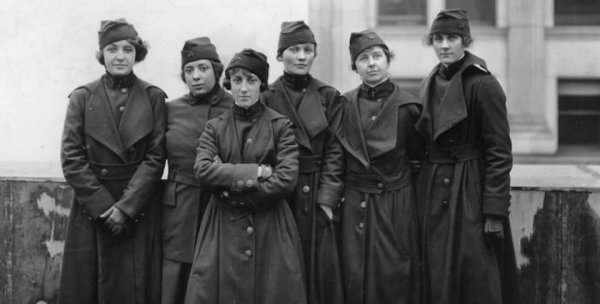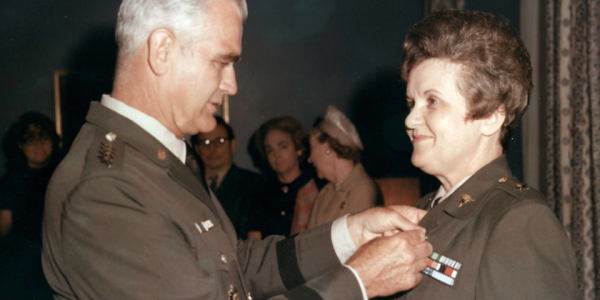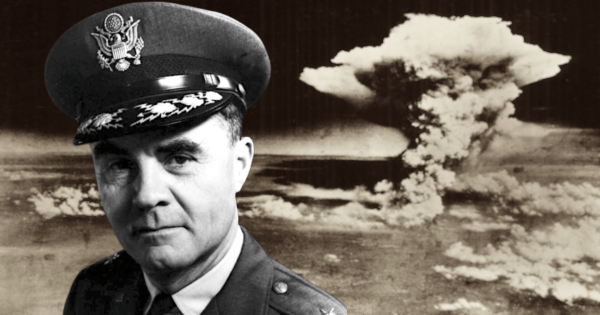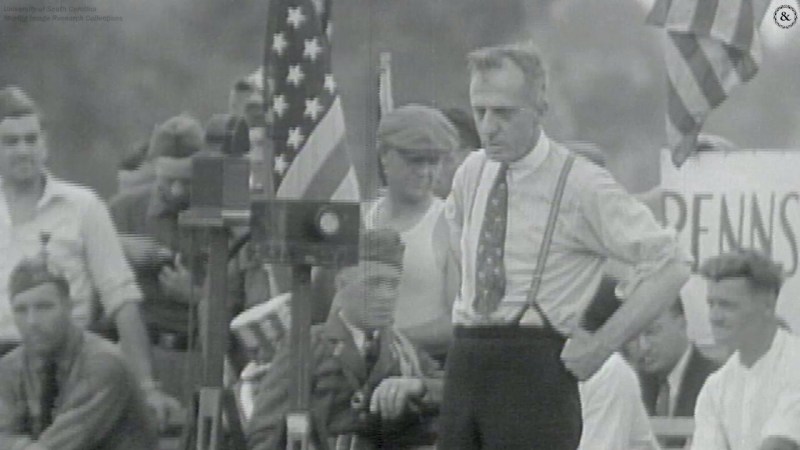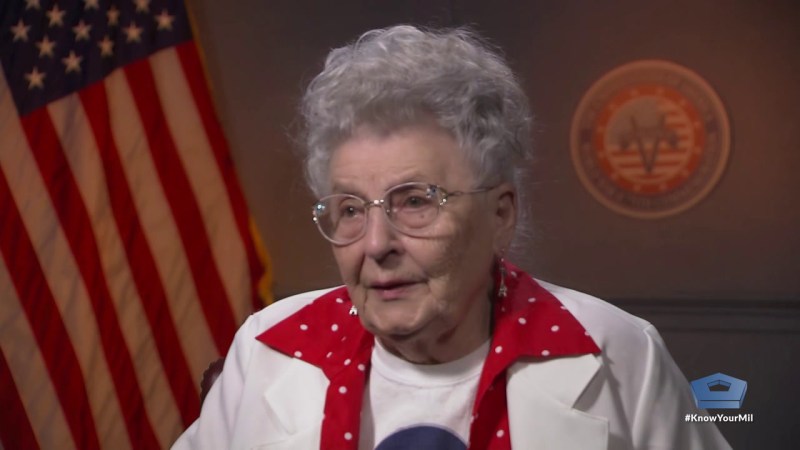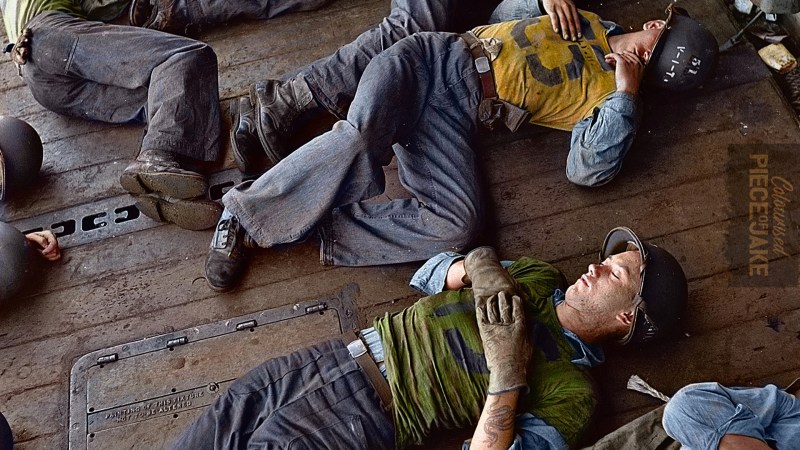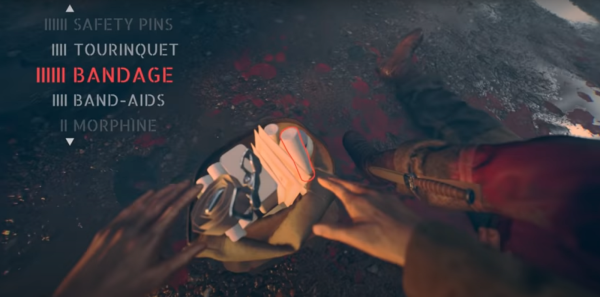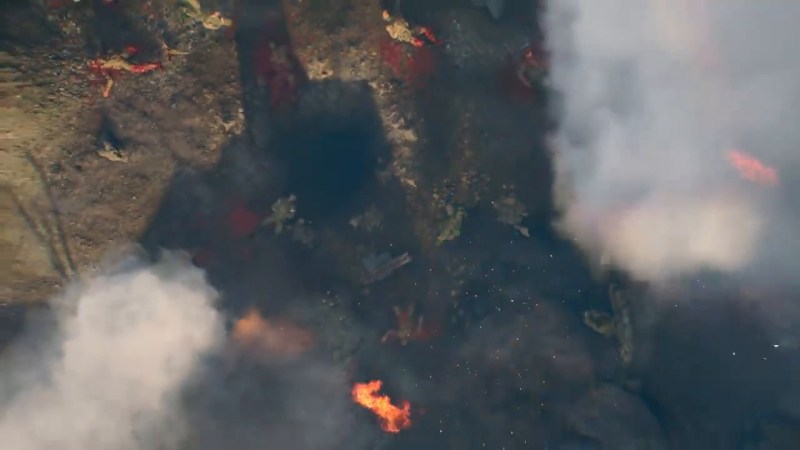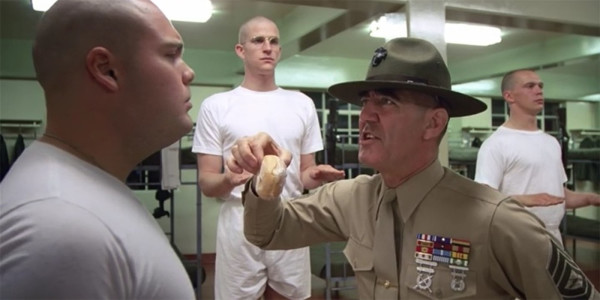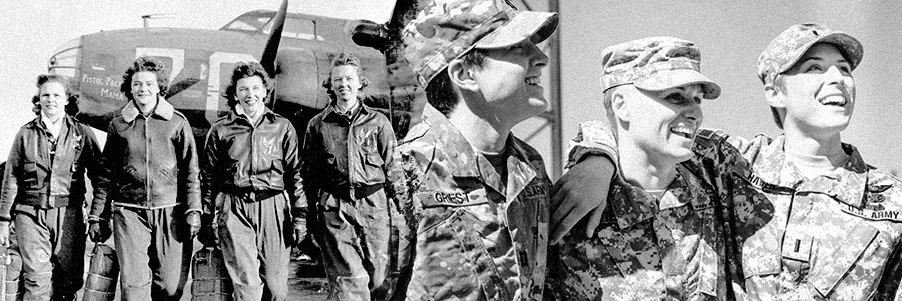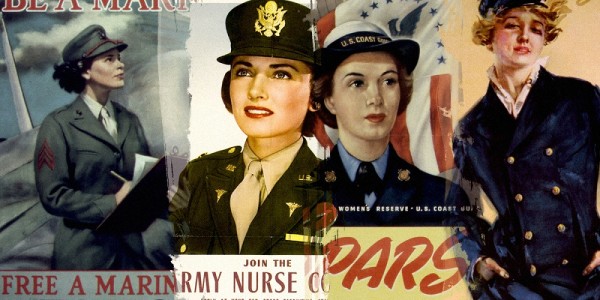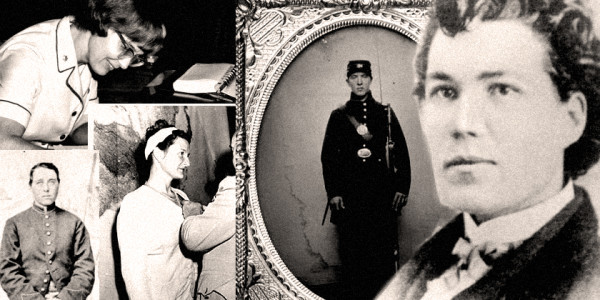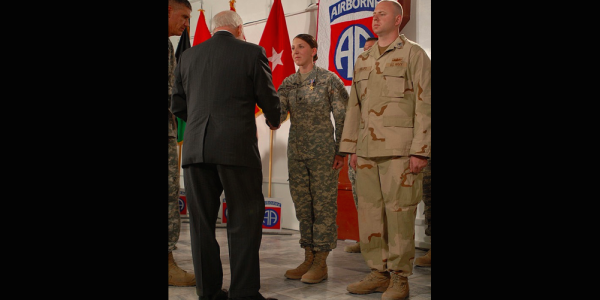Marine Lance Cpl. Kate Mannion was gutted when she found out she wouldn’t be deploying with her military police unit to Afghanistan in 2010. After learning they would be heading to Marjah to train local police forces alongside Marine infantry units, Mannion was told she’d have to sit on the sidelines, though she wasn’t injured, nor did she have a family emergency.
The problem was that Kate was a woman. And in 2010, women weren’t legally allowed in combat arms positions, nor could they attach to combat units in any way — not even in supporting roles, such as communications or logistics.
“I was devastated,” Mannion said. “I’d trained for two years with these guys, they were my brothers. And then to find out they would all deploy but I wouldn’t because I was a woman, because this assignment was outside the wire? I was crushed.”
Her leadership eventually found a loophole. Kate would join one of the new Female Engagement Teams (FET) assigned to the region. It was a novel concept, assembling a group of women who’d work alongside male infantry units, modeled on special operations’ cultural support teams. Afghan culture forbade male service members from interacting at all with local women, making information gathering impossible.
FETs bridged that gap. They collected intelligence, coordinated medical care for local women, and patrolled, though they couldn’t tell their higher headquarters they were patrolling. Instead, they had to use vague phrases like “gathering atmospherics” to avoid attracting attention.
“Thank god I had a sense of humor because a lot of times that’s what helped the grunts accept me,” said Mannion, who later turned comedy into a career as a co-host of the popular podcast, Zero Blog Thirty.
The wars in Iraq and Afghanistan aren’t the first times the military has had to unexpectedly, or reluctantly, allow women to shoulder more of the burden of war. FETs, and the Lioness program, which began in Iraq in 2003, have catapulted women’s roles in warfare into the 21st century.
Women have managed to access military service throughout history, though their service has usually been strictly confined to the day’s cultural norms. But the use of FETs, and the pairing of women and men enduring the hardships of ground combat, have changed the debate over whether women can serve in ground combat roles. The fact is that they have, and with more women now serving in the Army and Marine infantry and as Rangers and special operators, they’ll continue to do so.
‘To look unattractive… is downright morale-breaking and should be considered treason’

The history of the U.S. military is filled with examples of women being treated as second-class citizens for simply wanting to serve their country. Hundreds of women disguised themselves as men to enlist during the Civil War. Sometimes they passed for years, and a few even remained as men for the rest of their lives and drew veterans’ pensions. Some who were discovered serving as men were imprisoned, including the only woman ever to have received the Medal of Honor.
When World War I arrived, women went to work at a time when it wasn’t normal, or socially acceptable, for middle-class women to work outside the Victorian “domestic sphere.” Women went from wearing organ-displacing corsets to Army or Red Cross uniforms almost overnight, though they were barred from active-duty status. Only the reserves were open to them. Notably, the Navy allowed women to enlist as clerks — one of the earliest examples of “equal pay for equal work” — and receive the same wages as a man. All of this before they even had the right to vote. The 19th Amendment only passed after WWI ended.
And while many white women served as nurses (female doctors were banned) on the front lines of WWI, Black women weren’t allowed such privilege, though the military later accepted them into the ranks after the Spanish Flu created a dire need for more nurses, albeit in segregated quarters. Later, in World War II, Black nurses were relegated to providing care for German POWs.
Women returned to traditionally masculine jobs to support the WWII effort. This time they had more options. They became pilots, mechanics, and worked in shipyards, ammunition factories, though with strict oversight on beauty and curves. Part of their jobs revolved around making sure they looked pretty at work. As one male soldier wrote in 1941, for women “to look unattractive these days is downright morale-breaking and should be considered treason.”
Women had proved they could thrive in areas that would have been unthinkable before– the military and the workforce. But after the end of WWII, the women who wanted to stay in the workforce were called “unlovely women,” accused of being man-haters and “suffering from penis envy.” Employers wanted men for work, not women, regardless of their skill and competence.
‘We weren’t supposed to take her out [on missions] but we had to because there was no other medic’

In 2010, Kate Mannion was on a deployment she “shouldn’t have been on,” but it wasn’t all that different from the experience of another woman, Pfc. Monica Lin Brown. She shouldn’t have been on her unit’s patrol “outside the wire” during their 2007 deployment to Afghanistan, either. But the other medic, a male, was sick, and the unit needed someone to take care of soldiers if they were wounded on the battlefield.
“We weren’t supposed to take her out [on missions] but we had to because there was no other medic,” her platoon leader recalled later. “By regulations, you’re not supposed to,” but Brown “was one of the guys, mixing it up, clearing rooms, doing everything that anybody else was doing.”
Brown became the second woman to receive the Silver Star after responding to an improvised explosive device and enemy fire. She ran through vicious Taliban gunfire and saved two lives before she was subsequently pulled off patrols. Her presence in the fight attracted unwanted attention from leadership.
Mannion had a similar experience.
“There was a period when we got pulled back to base,” she said. “They couldn’t decide if we could be out there or not.” Amidst trying to work with locals and coordinating humanitarian efforts, Kate said, “we had to wait while leadership debated letting us back out. They didn’t want to let women leave the wire. We knew what we were doing wasn’t technically allowed.”
‘They were surprised and curious about us’
Future wartime successes may depend partly on exposing all-male partner nation forces to female U.S. military service members. Many nations where U.S. forces train, especially in Asia and the Middle East, rank low when it comes to women’s rights and women holding positions of authority. And while the U.S. military is still overwhelmingly male, female generals currently command both U.S. Transportation Command and U.S. Southern Command, and service women’s numbers are expected to grow.

One active-duty Marine, who spoke with Task & Purpose on condition of anonymity since she was not authorized to speak to reporters, witnessed this dynamic firsthand during a 2018 FET deployment to Indonesia. As part of their training, the FET and U.S. and Indonesian infantry Marines hiked seven miles daily, mostly through rural villages. “The locals came out to watch us,” she said. “I remember a little girl ran up to me one day. I kneeled down to say hello and let her touch my short hair. I think she was surprised to see a woman doing a man’s job.” She noted that the Indonesian Marines didn’t have any female Marines.
The FET’s involvement with jungle warfare training challenged any assumptions the all-male Indonesian Marines had about women. “They were surprised and curious about us,” she said. “Initially they were really hesitant to interact. But towards the end of the training, they were much more comfortable around us and really friendly.”
Until just last year, the Indonesian military subjected female recruits to abusive “virginity tests” as a way of determining their “morality.”
Dispelling harmful gender beliefs, like the idea that a woman’s leadership ability or level of respect hinges on virginity — or any part of her sexuality — may seem irrelevant. But most women have to work to be taken seriously, and military women are no exception. It’s not enough to wear a uniform. People, including some military men in friendly nations, have to actually see them perform to understand their capabilities.
That seems to be the crux of women in service. Most have to work hard just to be accepted, whether they’re in combat arms or not. Even the last Marine Commandant said as much to during a 2017 congressional hearing: “How much more do the females of our Corps have to do to be accepted?” Gen. Robert Neller asked at the time. “Was it enough when Major Megan McClung was killed by an IED in Ramadi or Captain Jennifer Harris killed when her helicopter was shot down while she was flying blood from Baghdad to Fallujah surgical or Corporals Jennifer Parcell and Hally Ann Sherrod and Ramona Valdez, all killed by the hands of our enemies? What is it going to take for you to accept these Marines as Marines?”
FETs: Better to have and not need than need and not have
When Marine FET leader 1st Lt. Alex Busch arrived at her unit prior to overseas deployment, she was surprised to learn there wasn’t a FET, nor were there plans to develop one. So she dug up email addresses to prior FET members and created her own. But some people dismissed her plan and questioned why she even felt the need to integrate with infantry Marines. There was no need to be tactical.
“The infantry staff are the most supportive of us,” she told Task & Purpose. “If commanders can have an extra asset they can call on, especially if you’re a crisis response unit, why would people not want us to do this?”
Developing early relationships with infantry counterparts helps prepare everyone for contingencies, she said. “We need to integrate and integrate early. We have to plan for everything.”

She pointed out that there’s no concrete guidance on how or when units should create and utilize FETs, even though requests for FET support have been common over the years. Indeed, Marine spokesman Capt. Andrew Wood confirmed the ad-hoc nature of FETs: “Female Engagement Teams are task-organized units established by unit commanders based on mission requirements,” he said.
Still, a FET member who was involved in the chaotic evacuation of U.S. forces and Afghan allies from Afghanistan in 2021, believes the Corps should make FETs more permanent. There was no FET on her deployment until a couple of weeks before heading into Afghanistan, despite non-combatant evacuations being a unit mission, she said.
The Marine’s unit quickly assembled a group of women dedicated to searching Afghan women and children amidst what would prove to be a harrowing and tragic mission. But searching people for explosives isn’t the same as an airport security pat-down — it’s intensely invasive. The team was thrown together last-minute, eliminating any opportunities to train under stress.
“If we’d done this sooner, we wouldn’t have had some of the problems we had,” the Marine said on condition of anonymity. “We had to learn personalities and build trust as a team. Figuring that out in Afghanistan just added more stress.”
”If I’d known I was going to be on the FET before deployment I would have taken advantage of any downtime to train with the grunts,” she said. “Get in the training. Make it work.”
The ‘controversy’ continues
The debate around women in combat has raged ferociously for years. But in 2022, it seems like women serving in or close to infantry units is shaping up to be a new normal. Controversy remains, though: gender biases have been noted, and some men don’t want to work with women. The Air Force recently came under fire for trying to admit a woman through its special operations pipeline, despite her own desire to quit. For some nations though, controversy about women in combat is a luxury they can’t afford.
Gender integration expert Beth Wolny, a retired Marine lieutenant colonel, is optimistic about the future. “History wins,” she told Task & Purpose. “Time and time again, the services fight about letting women into more positions. But then the next conflict comes and they go into those roles, and they do well.”

She noted that in 2015, Marine leadership distilled a thousand pages of gender integration studies into just four, omitting important nuances. A shortage of willing male and female volunteers in select specialties made gathering accurate data challenging. Some of the male volunteers Wolny interviewed for her own research deemed the study “unfair,” she said.
Prior to 2012, passing the grueling combat endurance test at Marine Infantry Officer Course wasn’t a graduation prerequisite. That requirement emerged the same year women were allowed into the course. A longtime advocate for equal physical standards in combat arms, Wolny wonders why the Marine Corps has resisted gender-neutral standards for combat arms. The Army, meanwhile, is still figuring that out.
Marine Corps University professor Bradford Wineman sees gender integration as a critical part of successful modern recruiting.
”Patriotism and republicanism alone aren’t bringing people into the military like they used to,” Wineman said, noting that outdated policies, and a “too little too late” diversity and inclusion effort, as contributing to impending recruiting doom. “Recruiters are working 70-hour weeks just to get people to the depot. That’s not sustainable over the next few decades.”
“Contrary to the conceptions of many male Marines, women don’t enter the service with the mission of destroying the Marine Corps,” said Wineman. “Women want to serve for the same reasons that they do.”
Perhaps more than anything else, the 2015 gender integration study highlighted the lack of physical standards within combat arms. And it showed that being “heavier helped when marching under load, and challenges like equipment-fit and carrying heavy weight affected shorter female and male Marines in similar ways,” Wolny said.
“Women will play a critical role in the next conflict, not in spite of the new roles they fill, but because of them,” she said.
+++
Kelsey Baker is a journalist and a former active duty Marine officer. Follow her on Twitter @BzGorda
What’s new on Task & Purpose
- A photo apparently showing Russian troops stranded in an elevator is going viral
- A Marine special ops commander explains why Russia’s stalled advance in Ukraine is no surprise
- How the US can beat Russia in Ukraine without firing a shot
- ‘My training took over’ — This Air Force cop went on a 100 mph car chase to arrest suspect
- In search of a just war: Why American veterans are answering a call to serve in Ukraine
Want to write for Task & Purpose? Click here. Or check out the latest stories on our homepage.
